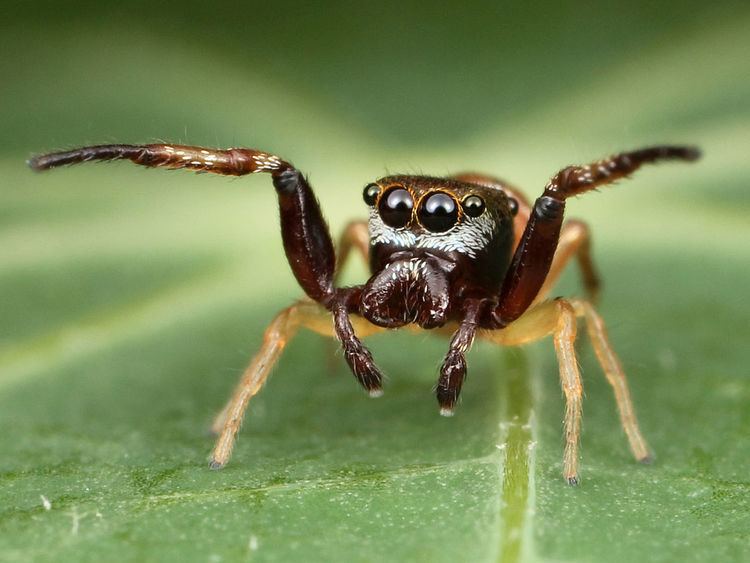Family Salticidae Rank Genus | Order Spider | |
 | ||
Similar Zygoballus sexpunctatus, Sassacus, Rhetenor, Tutelina, Messua | ||
Hammer jawed jumping spider zygoballus rufipes
Zygoballus is a genus of jumping spiders found in North and South America.
Contents
- Hammer jawed jumping spider zygoballus rufipes
- Zygoballus rufipes peckham peckham 1885 middlesex co ma
- Taxonomy and history
- Description
- Distribution
- Species
- References
Zygoballus rufipes peckham peckham 1885 middlesex co ma
Taxonomy and history
The genus was first described in 1885 by American arachnologists George and Elizabeth Peckham based on the type species Zygoballus rufipes. The name derives from a combination of the Ancient Greek word ζυγόν (zygon), meaning "yoke", and the genus name Ballus. The etymology of Ballus is unknown, but may be related to the Greek word βαλλίζω (ballizo), meaning "dance" or "jump about".
The genus Messua, based on the type species Messua desidiosa, was synonymized with Zygoballus by Eugène Simon in 1903. Simon argued that Messua desidiosa was a transitional species which differed "much less from typical Zygoballus than would seem to be indicated by [the Peckham's] description." This synonymy was reversed by Wayne Maddison in 1996, and Messua restored as a valid genus.
The genus Amerotritte, based on the type species Amerotritte lineata, was synonymized with Zygoballus in 1980 by María Elena Galiano. Galiano stated that the holotype of Amerotritte lineata was actually a very young Zygoballus specimen.
Zygoballus is currently classified in the subfamily Dendryphantinae of the family Salticidae (jumping spiders).
Description
Spiders of the genus Zygoballus share a strong resemblance in appearance. The cephalothorax is high and roughly square when viewed from above. It is widest at the posterior eyes, with the ocular quadrangle occupying approximately three-fifths of the cephalothorax. The cephalothorax slopes steeply behind the posterior eyes and the sides of the cephalothorax are nearly vertical. The labium is as long or longer than it is wide. The anterior (first) pair of legs are the largest, with three pairs of spines on the ventral surface of the tibia. Males have obliquely oriented chelicerae with long fangs.
Many species exhibit wide variation in color, size, and markings.
Distribution
Zygoballus is a genus from the New World, ranging from Argentina to Canada. Three species from India were originally placed in Zygoballus, but have been reassigned to other genera.
Species
As of July 2016, the World Spider Catalog accepted the species listed below. One species, Z. quaternus, was previously recognized (prior to 2008), but is now considered a nomen dubium. Several other species are known only from single specimens. In addition to the species listed below, a 2001 phylogenetic analysis suggested that Rhetenor texanus may also belong in Zygoballus, but this has not been accepted by the World Spider Catalog.
